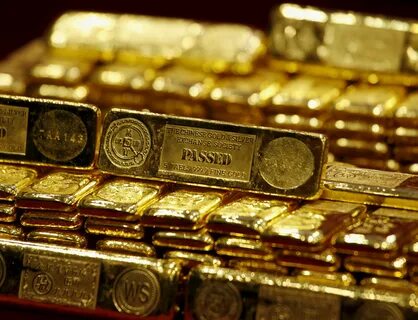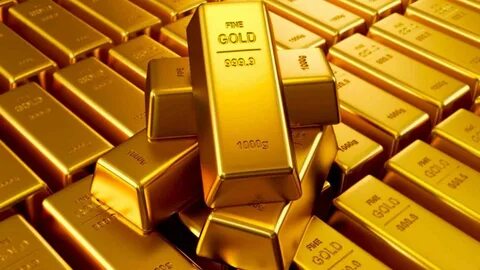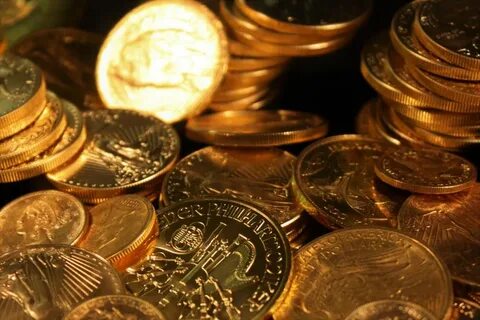Metal and gold have long been coveted for their intrinsic value and versatile properties. In today’s market, their importance and value continue to hold significance across various industries. From manufacturing and jewelry to investment and trading, the roles of metal and gold are diverse and impactful. In this article, we will delve into the exploration of their value in the contemporary market and analyze their enduring significance.
Exploring the value of metal and gold in today’s market involves evaluating a multitude of factors including supply and demand, market trends, geopolitical dynamics, and economic indicators. Investors, financial institutions, and governments closely monitor the fluctuations in metal and gold prices to make informed decisions regarding their portfolios and monetary policies. The perceived value of these assets can be influenced by various global events such as trade wars, natural disasters, and technological advancements. Furthermore, the role of gold as a safe haven asset and its historical significance contribute to its enduring value in the modern market. Understanding the dynamics of these commodities is essential for individuals and entities seeking to navigate the complexities of today’s market.
The Importance of Gold in the World Economy

Gold holds a special place in the world economy due to its unique properties and long-standing status as a store of value. The metal is considered a safe-haven asset that investors turn to during times of economic uncertainty and market instability. Central banks also hold gold as part of their foreign currency reserves, adding to its importance in the global financial system. Additionally, gold is used in various industries, such as electronics and jewelry, further contributing to its economic significance. Overall, the importance of gold in the world economy is deeply rooted in its historical, cultural, and financial aspects.
How Metal Mining Is Impacting the Environment

Metal mining has significant environmental impacts due to the extensive excavation and processing of ore. It leads to the destruction of natural habitats, deforestation, soil erosion, and the release of toxic chemicals and heavy metals into the environment. These pollutants can contaminate water sources, harm aquatic life, and enter the food chain, posing risks to human health. Additionally, metal mining contributes to air and water pollution, as well as greenhouse gas emissions, further exacerbating environmental degradation and climate change. The long-term consequences of metal mining can be detrimental to ecosystems and biodiversity, making it a major concern for environmental conservation and sustainability efforts.
10 Uses of Gold You Didn’t Know About

1. Gold is used in dentistry for crowns, bridges, and other types of dental work due to its durability and inertness in the mouth.
2. It is commonly used in electronics for its excellent conductivity and corrosion resistance, making it ideal for coating connectors and other components.
3. Gold nanoparticles are being researched for their potential use in cancer treatment, as they can help deliver drugs directly to tumors and enhance imaging techniques.
4. Some luxury skincare products contain gold particles, as it is believed to have anti-inflammatory and anti-aging properties.
5. Gold is used in the production of glass, as it can be added to create a red or ruby-colored glass as well as to help protect satellites and other spacecraft from the sun’s heat and radiation.
6. Gold leaf is used in the culinary world to decorate and add a touch of luxury to desserts and other food items.
7. It is a key component in high-end fashion and jewelry, where it is used in watches, clothing, and accessories for its lasting shine and prestigious image.
8. Gold is used in medical treatments for conditions such as rheumatoid arthritis and certain types of cancer, as it can help reduce inflammation and aid in the destruction of diseased cells.
9. The metal is used in some industrial applications, such as in the production of aircraft and spacecraft, due to its ability to withstand extreme temperatures and pressures.
10. Gold is used in the production of coins and bullion for investment, as it has long been considered a reliable store of value and a hedge against inflation.
The History of Metalworking: From Ancient Times to Modern Techniques

The history of metalworking can be traced back to ancient times, with evidence of early metalworking found in civilizations such as the Egyptians, Mesopotamians, and Indus Valley. These early metalworkers developed techniques for extracting and working with copper, bronze, and eventually iron.
Metalworking continued to evolve throughout the Middle Ages, with advancements in techniques for casting, forging, and blacksmithing. The Renaissance saw further developments in metallurgy, including the invention of new alloys and the discovery of new metalworking processes.
The Industrial Revolution brought about significant advancements in metalworking, with the invention of new machines and the use of steam power to drive manufacturing processes. This led to the mass production of metal goods and the development of new techniques such as metal stamping and welding.
In modern times, metalworking has continued to advance with the development of new materials, such as stainless steel and aluminum, and the use of computer-aided design and manufacturing (CAD/CAM) technologies. These advancements have led to increased precision and efficiency in metalworking processes, allowing for the production of complex and intricate metal parts and products.
Overall, the history of metalworking is a long and storied one, with advancements in techniques and technologies continually shaping the way metal is worked and used in various industries.
Why Investing in Gold Could Benefit Your Portfolio
Investing in gold could benefit your portfolio as it is considered a safe-haven asset that tends to hold its value during times of economic uncertainty. It can act as a hedge against inflation and currency devaluation. Gold also has a low correlation with other asset classes, which can help diversify and reduce the overall risk in your investment portfolio. Additionally, gold has a long history as a store of value and has been used as a form of currency for thousands of years. This makes it a potentially reliable and stable investment option for the long term.
The Fascinating World of Precious Metal Collecting
The Fascinating World of Precious Metal Collecting is a diverse and dynamic hobby that involves the acquisition and appreciation of various precious metals, including gold, silver, platinum, and palladium. Collectors are drawn to these metals for their intrinsic value, rarity, and historical significance. They may collect coins, bars, bullion, or other forms of precious metals, often focusing on specific types, periods, or designs. Precious metal collecting also encompasses the study of numismatics, the history of minting, and the economic and cultural factors that influence the value of precious metals. Engaging in this hobby offers a unique blend of investment, historical exploration, and aesthetic enjoyment.
How Metal Alloys Have Revolutionized Technology
Metal alloys have revolutionized technology in numerous ways. By combining two or more metals, engineers and scientists have been able to create materials with enhanced properties such as strength, durability, and corrosion resistance. This has led to the development of stronger and lighter materials for use in construction, transportation, and electronics. Additionally, metal alloys have played a crucial role in the advancement of medical devices, aerospace technology, and renewable energy systems. Overall, metal alloys have significantly expanded the capabilities of modern technology and continue to drive innovation in various industries.
Exploring the Role of Gold in Popular Culture
Exploring the role of gold in popular culture involves delving into its historical significance and its portrayal in various forms of media, such as literature, film, and music. Gold has long been a symbol of wealth, power, and luxury, and its presence in popular culture reflects these associations. From iconic films like “The Gold Rush” to songs that reference gold as a metaphor for success and riches, the precious metal has woven its way into the fabric of popular culture in multifaceted ways. By examining these representations, we can gain insight into the ways in which gold has been perceived and valued by different societies and how these perceptions have evolved over time.
The Future of Metal: Innovations and Advancements
See also: uig ground scanner
The future of metal in the manufacturing industry is being driven by technological advancements and innovations. From additive manufacturing techniques such as 3D printing to the development of new alloys and composites, the metal industry is constantly evolving. These advancements are leading to stronger, lighter, and more durable metal components, which have a wide range of applications across various industries. Additionally, the integration of automation and artificial intelligence is revolutionizing metal manufacturing processes, leading to improved efficiency and productivity. Overall, the future of metal is being shaped by cutting-edge technologies and materials that have the potential to revolutionize the way we design and produce metal components.
Unearthing the Environmental Impact of Gold Mining
Unearthing the environmental impact of gold mining involves studying the effects of mining activities on ecosystems, water quality, and air pollution. This includes understanding the release of hazardous chemicals, such as mercury and cyanide, into the environment, as well as the disruption of habitats and the contamination of water sources. Researchers also examine the long-term consequences of mining, such as deforestation and soil erosion, to assess the overall impact on the environment. By uncovering and documenting these effects, scientists can inform sustainable mining practices and develop strategies for mitigating the environmental impact of gold mining.
In conclusion, exploring the value of metal and gold in today’s market reveals the enduring significance of these precious commodities. Despite fluctuations in the global economy, their timeless worth and utility make them essential assets for investors and consumers alike. Whether it’s the industrial applications of metal or the cultural allure of gold, their enduring demand underscores their importance in the modern marketplace. As we continue to navigate the dynamic landscape of finance and trade, the enduring appeal of metal and gold remains a cornerstone of economic stability and growth.
See also
https://www.tf1info.fr/conso/video-recyclage-les-vieux-appareils-electroniques-valent-de-l-or-etain-argent-cuivre-2198184.html
https://www.maison-travaux.fr/actualites/budget/ne-pas-jeter-vieil-appareil-vaut-or-572232.html

